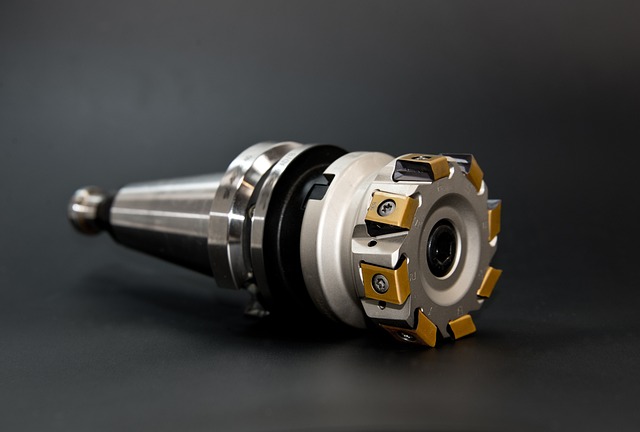Strategies for effective reconditioning and sharpening of inserts
Reconditioning and sharpening inserts is an essential part of maintaining performance in machining and metalworking operations. Properly restored carbide inserts and blades can improve precision, extend tool life, and reduce waste. This article outlines practical strategies for inspection, cleaning, sharpening, regrinding, and finishing, with attention to coolant, coatings, and CNC considerations that influence durability and wear.

Reconditioning and sharpening inserts is a practical pathway to consistent part quality and controlled tooling costs in milling, drilling, turning, and other machining operations. Effective reconditioning begins with reliable inspection and cleaning, proceeds through properly selected sharpening or regrinding techniques, and ends with finishing checks that verify edge geometry and coating integrity. Attention to coolant use, mounting, and machine setup preserves precision and reduces premature wear during subsequent metalworking cycles.
When to inspect inserts for wear and reconditioning
Regular inspection identifies when inserts have reached the limits of useful life and when reconditioning makes sense. Look for flank wear, crater wear, microchipping, or built-up edge; these degrade surface finish and dimension control in CNC milling, drilling, or turning. Carbide inserts that show excessive wear or damage beyond the tolerance of a simple resharpening may still be candidates for reconditioning if edge loss is small and coating condition is acceptable. Documenting wear patterns helps determine whether feed, speed, or coolant adjustments are needed to improve durability.
Preparing inserts for sharpening and regrinding
Proper preparation improves consistency and reduces the risk of damage during sharpening. Begin with thorough cleaning to remove chips, coolant residues, and any oil that can mask wear or interfere with grinding. Inspect coating condition—some coatings can be partially restored, but many require removal before regrinding. Securely mount inserts in fixtures designed for their geometry; unstable mounting can induce vibration and defeat precision. When working with coated carbide, remove or account for the coating thickness so final geometry meets original tolerances.
Sharpening methods: manual grinding and mechanical options
Choose a sharpening method that matches the insert geometry and the required tolerance. Manual bench grinding can be suitable for simple chamfers or minor edge touch-ups, but precision grinding machines provide repeatable results for complex geometries. Diamond grinding wheels are common for carbide inserts because they maintain form and resist clogging. Maintain a consistent wheel speed, appropriate feed rates, and light infeed to avoid thermal damage. For blades and inserts used in finishing operations, preserving the nose radius and rake angles is critical to maintain part quality.
Regrinding for geometry restoration and CNC integration
Regrinding restores worn profiles and can return inserts to original specifications if done correctly. For CNC applications, regrinding should replicate the geometry expected by the toolpath to preserve dimensional accuracy. Use jigs and digital measuring tools to ensure repeatability across batches. Consider how regrinding affects runout and balance—imbalanced inserts can cause chatter in high-speed milling or turning. Maintain records of how many regrinds an insert has undergone to avoid weakening the carbide substrate beyond usable limits.
Coatings, finishing, and restoring durability
Coatings play a key role in wear resistance and heat management. Some reconditioning workflows include recoating after regrinding to restore performance. Evaluate the feasibility of recoating based on the substrate condition and economics: thin PVD or CVD layers require precise surface preparation. Finishing steps such as honing the cutting edge can remove microchipping and reduce built-up edge, improving finish in metalworking and reducing friction during drilling and milling. Verify final coating adhesion and thickness where applicable.
Coolant, mounting, and final quality checks
Coolant selection and delivery affect both sharpening/regrinding processes and subsequent cutting performance. During machining, appropriate coolant reduces thermal shock and extends edge life; when regrinding, coolant can cool the wheel and part to prevent heat damage. After sharpening, inspect edges under magnification to confirm absence of microcracks and to verify rake and clearance angles. Perform test cuts in representative materials to confirm precision and surface finish. Track performance data—cycle counts, part quality, and observed wear—to refine maintenance intervals.
Conclusion
A methodical approach to reconditioning and sharpening inserts balances precision, durability, and cost-effectiveness for milling, drilling, turning, and broader CNC metalworking applications. Consistent inspection, careful preparation, appropriate grinding techniques, attention to coatings, and rigorous finishing checks help restore inserts to reliable performance while protecting part quality. Well-documented processes and close monitoring of coolant, mounting, and operating parameters reduce wear and extend the useful life of carbide inserts and blades.





